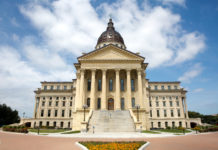We received several questions from members regarding the latest informational bulletin related to door locking arrangements from the Kansas Fire Marshal’s office. We followed up with National’s Life Safety Code Consultant and CMS Regional office and learned the following:
- There is nothing that prohibits any provider from posting the keypad code on the wall.
- There has not been any guidance or memos from CMS stating WanderGuard systems are prohibited.
- There are multiple provisions in the Life Safety Code® that permit door locking under certain circumstances. The one most utilized in LTC is the clinical needs provision. It essentially permits the locking of doors for the clinical needs of the residents if all staff can unlock the door at any time. This is commonly accomplished with a magnetic lock and a passcode distributed to all staff. To alleviate staff forgetting the code, some organizations place the code on the wall.
- The CMS response indicates that you can only apply the clinical needs door locking provision if “all” the residents in the locked area qualify for the need (e.g. it is a specific unit designated for memory care, dementia unit, etc.). While the body of the code does not specifically say this, the appendix section, which is intended to provide additional intent of a code section, does indicate that the clinical needs door locking provision should not be applied for areas outside of these specialized units. Therefore, if you want to secure doors in other areas of the building, you need to apply another door locking provision. This is accomplished by installing a delayed egress door locking system that rings an alarm and eventually unlocks after a delay.
If you have further questions on a door locking arrangement or whether your building needs modifications to comply with this interpretive guidance, reach out to Kylee Childs.





